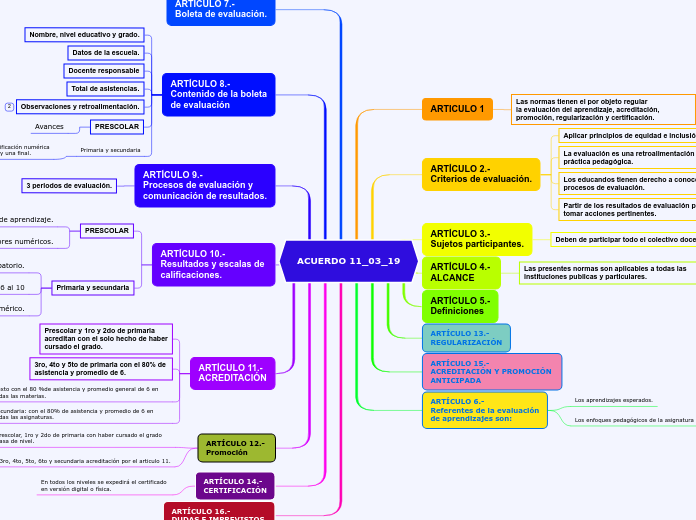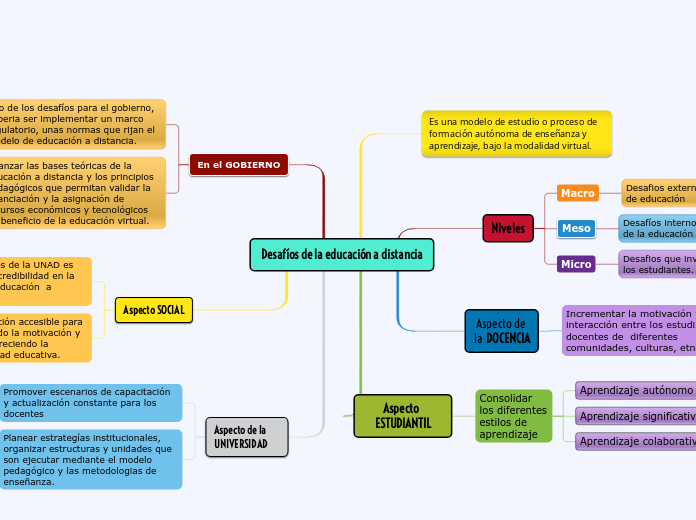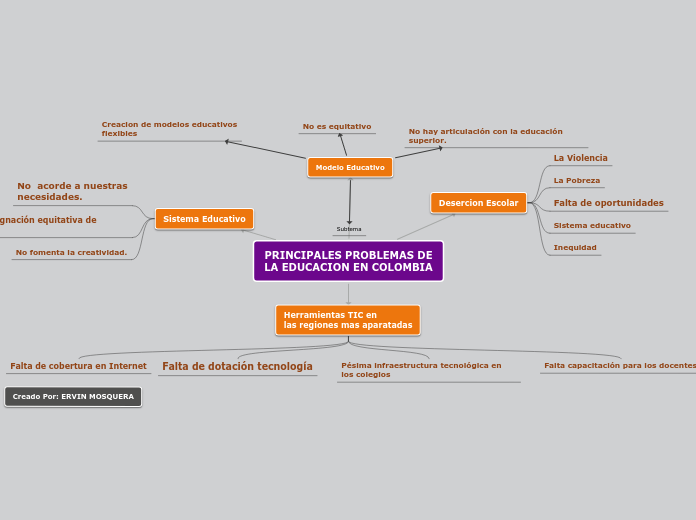ACUERDO 11_03_19
The part of speech is a category to which a word is assigned according to its syntactic functions. In English the main parts of speech are noun, pronoun, adjective, determiner, verb, adverb, preposition, conjunction, and interjection.
ARTÍCULO 16.-
DUDAS E IMPREVISTOS.
ARTÍCULO 14.-
CERTIFICACIÓN
En todos los niveles se expedirá el certificado
en versión digital o física.
ARTÍCULO 12.-
Promoción
3ro, 4to, 5to, 6to y secundaria acreditación por el articulo 11.
Prescolar, 1ro y 2do de primaria con haber cursado el grado pasa de nivel.
ARTÍCULO 11.-
ACREDITACIÓN
A conjunction is a word like 'if' 'but' or 'and' which is used to connect sentences or clauses together.
Secundaria: con el 80% de asistencia y promedio de 6 en todas las asignaturas.
Sexto con el 80 %de asistencia y promedio general de 6 en todas las materias.
3ro, 4to y 5to de primaria con el 80% de
asistencia y promedio de 6.
Subordinating conjunctions are conjunctions that are used at the beginning of subordinate clauses. Some examples of these conjunctions are: although, after, before, because, how, if, once, since, so that, until, unless, when etc.
Prescolar y 1ro y 2do de primaria
acreditan con el solo hecho de haber
cursado el grado.
Coordinating conjunctions always connect phrases, words, and clauses. They are: for, and, nor, but, or, yet, so.
ARTÍCULO 10.-
Resultados y escalas de
calificaciones.
A preposition is one of the most exciting parts of grammar. A preposition is used to describe the location of something in relation to something else.
Compound preposition consists of two or more words.
Clubes sin valor numérico.
1ro y 2do de primaria escala del 6 al 10
Escala de 5 al 10 y el 5 es reprobatorio.
When a preposition consists of one word it is called single or simple preposition.
Sin valores numéricos.
Observaciones y sugerencias de aprendizaje.
ARTÍCULO 9.-
Procesos de evaluación y
comunicación de resultados.
An interjection is used to express emotion in a sentence.
Think of other interjections!
3 periodos de evaluación.
ARTÍCULO 8.-
Contenido de la boleta
de evaluación
An adverb is used to describe a verb, but it can also describe an adjective or another adverb.
Adverbs normally help paint a fuller picture by describing how something happens.
Primaria y secundaria
Asignaturas y calificación numérica
de tres parciales y una final.
PRESCOLAR
Avances
Observaciones y retroalimentación.
Create sentences
A lot, Little, Much
Total de asistencias.
The intensifiers strengthen adverbs adjectives and adverbs and down- toners make them weaker.
Docente responsable
Datos de la escuela.
Nombre, nivel educativo y grado.
ARTÍCULO 7.-
Boleta de evaluación.
A numeral is a word or phrase that describes a numerical quantity.
Some theories of grammar use the word 'numeral' to refer to cardinal numbers that act as a determiner to specify the quantity of a noun, for example the 'two' in 'two hats'.
ARTÍCULO 6.-
Referentes de la evaluación
de aprendizajes son:
Los enfoques pedagógicos de la asignatura
Los aprendizajes esperados.
ARTÍCULO 15.-
ACREDITACIÓN Y PROMOCIÓN
ANTICIPADA
ARTÍCULO 13.-
REGULARIZACIÓN
ARTÍCULO 5.-
Definiciones
An article is a word used to modify a noun, which is a person, place, object, or idea. Technically, an article is an adjective, which is any word that modifies a noun.
ARTÍCULO 4.-
ALCANCE
A pronoun is a word that can be used in place of a noun, typically after the noun itself has already been stated.
Las presentes normas son aplicables a todas las instituciones publicas y particulares.
Unlike demonstrative pronouns, which point out specific items, indefinite pronouns are used for non-specific things. This is the largest group of pronouns. All, some, any, several, anyone, nobody, each, both, few, either, none, one, and no one are the most common.
ARTÍCULO 3.-
Sujetos participantes.
An adjective is a word that's used to describe a specific noun and to provide more detail to the listener.
Deben de participar todo el colectivo docente.
Expresses a comparison between two entities or groups of entities in quality or degree.
ARTÍCULO 2.-
Criterios de evaluación.
A noun is defined as a person, place, thing or idea. Proper nouns always begin with a capital letter. Common nouns, which are general words, such as 'cars,' are not capitalized.
Partir de los resultados de evaluación para
tomar acciones pertinentes.
Compound nouns are words where two nouns have been stuck together to make a new noun. Compound nouns should be written as one word, without a hyphen.
Los educandos tienen derecho a conocer los
procesos de evaluación.
A noun which refers to a group of things/people.
La evaluación es una retroalimentación de nuestra práctica pedagógica.
Countable nouns are nouns that can be counted, even if the number might be extraordinarily high.
Uncountable nouns are nouns that come in a state or quantity which is impossible to count; liquids are uncountable, as are things which act
like liquids.
Aplicar principios de equidad e inclusión.
Proper nouns are the names of specific people or places. They should always begin with a capital letter.
ARTICULO 1
A verb is an action word or 'doing' word that signifies movement in some way.
Las normas tienen el por objeto regular
la evaluación del aprendizaje, acreditación, promoción, regularización y certificación.
An auxiliary verb helps the main (full) verb and is also called a 'helping verb.' With auxiliary verbs, you can write sentences in different tenses, moods, or voices.









